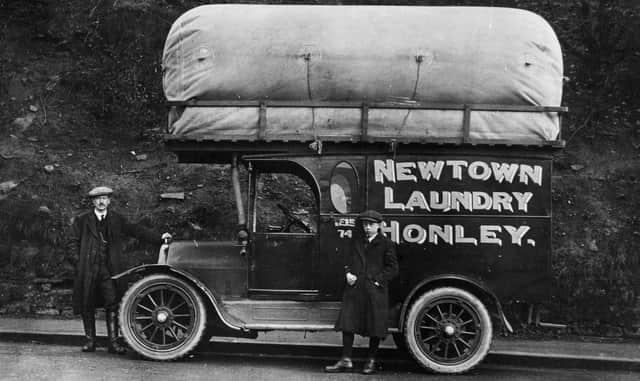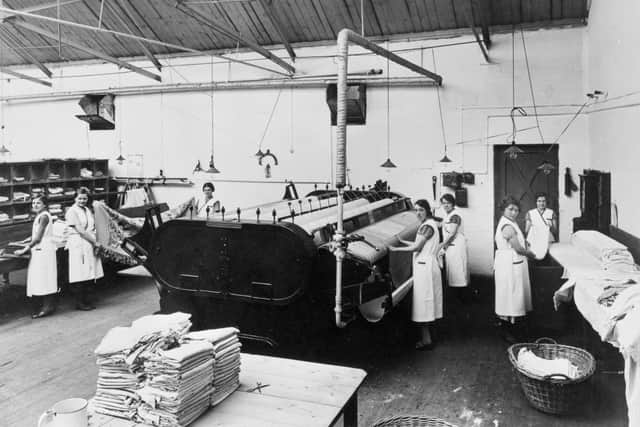Nostalgia: When laundry day was an event for the whole town


Before the Second World War, it was a family’s social standing that determined the likelihood of washing their own clothes or sending them out to be washed, starched and pressed by professionals.
From the days of the horse and cart, every town had a steam laundry whose staff went from door to door to collect clothes and linen. By the 1920s, vans had mostly replaced horses but the washing itself went on much as before. Whites were boiled for 15 minutes in a solution of soap and soda ash; collars and cuffs were detached and laundered separately. The technique remained almost unchanged until the first chemical detergents emerged.
Advertisement
Hide AdAdvertisement
Hide AdThe laundries were staffed mostly by women and girls as young as 14 – and for the lower classes, working in one was considered a respectable profession. It was also a skill they could apply to their own family’s washing – scaled down to a tub and washboard, with an outside line for drying.


Automation came slowly to Britain. The first domestic machines were semi-automatic twin-tubs, in which clothes had to be dragged from a top-loading washer into a fast spinner, with an outlet hose hooked over the sink. But for many families in the 1950s and 60s, a weekly trip to the new generation of laundrette was a more affordable alternative. The first, Central Wash on Queensway in West London, opened in 1949, and three decades later Britain had 12,500 more.
But as front-loading domestic machines and dryers became the norm the number tumbled to less than 3,000 today.
Support The Yorkshire Post and become a subscriber today. Your subscription will help us to continue to bring quality news to the people of Yorkshire. In return, you’ll see fewer ads on site, get free access to our app and receive exclusive members-only offers. Click here to subscribe.
Comment Guidelines
National World encourages reader discussion on our stories. User feedback, insights and back-and-forth exchanges add a rich layer of context to reporting. Please review our Community Guidelines before commenting.